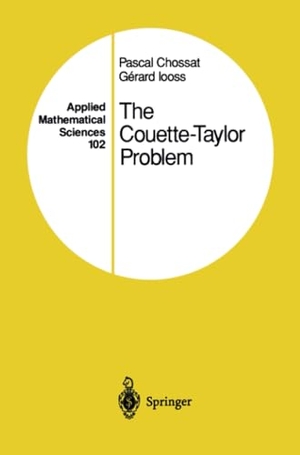
Gerard Iooss / Pascal Chossat
The Couette-Taylor Problem
- Springer New York
- 2011
- Taschenbuch
- 248 Seiten
- ISBN 9781461287308
1. 1 A paradigm About one hundred years ago, Maurice Couette, a French physicist, de signed an apparatus consisting of two coaxial cylinders, the space between the cylinders being filled with a viscous fluid and the outer cylinder being rotated at angular velocity O2. The purpose of this experiment was, follow ing an idea of the Austrian physicist Max Margules, to deduce the viscosity of the fluid from measurements of the torque exerted by the fluid on the inner cylinder (the fluid is assumed to adhere to the walls of the cylinders). At least when O is not too large, the fluid flow is nearly laminar
Mehr
Weniger
zzgl. Versand
in Kürze